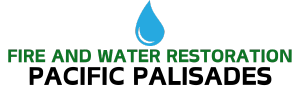The sudden and devastating impact of fire or water damage in your home can throw your life into disarray. However, understanding the correct steps to take can significantly mitigate the long-term effects and expedite the recovery process. Here’s a comprehensive guide on how to tackle fire and water damage in your home, ensuring a safer and more efficient restoration.
Immediate Safety Measures: Prioritizing Life and Preventing Further Damage
The first priority after a fire or water incident is ensuring the safety of all occupants. Evacuate immediately if there’s an ongoing fire or if you suspect structural instability due to water damage. Once everyone is safe, turn your attention to minimizing further damage. For water damage, shut off the main water supply to prevent continuous flooding. For fire damage, if it’s safe to do so, disconnect the power supply to the affected area to avoid electrical hazards.
Documenting the Damage: Essential for Insurance Claims and Restoration
Thorough documentation is crucial for insurance claims and accurate restoration. Before any cleanup or repairs, meticulously document the damage with photographs and videos. Capture every affected area, including structural damage, water lines, soot patterns, and damaged belongings. This visual record will provide concrete evidence for your insurance company and assist restoration professionals in assessing the extent of the damage. Avoid discarding damaged items or removing debris until they have been documented, as this evidence is essential for claims processing.
Contacting Your Insurance Company: Initiating the Claims Process
Contact your insurance company immediately to initiate the claims process. Provide them with a detailed description of the damage and inquire about the necessary documentation for your claim. Understand your policy coverage and ask about temporary housing or living expenses if your home is uninhabitable. Your insurance company will likely send an adjuster to assess the damage and provide an estimate for repairs.
Engaging Professional Restoration Services: Expertise for Comprehensive Recovery
While DIY efforts may seem tempting, professional restoration services are essential for thorough and effective recovery, especially for significant damage. These experts possess the necessary equipment, training, and experience to address hidden issues like mold growth, structural damage, and toxic fumes. They can also ensure proper drying, cleaning, and sanitization of affected areas, minimizing long-term complications.
Addressing Water Damage: Preventing Mold and Structural Issues
Water damage can lead to severe structural issues and mold growth if not addressed promptly. Remove standing water using pumps or wet vacuums. Dry affected areas thoroughly using dehumidifiers and fans. Remove wet carpets, upholstery, and other porous materials that can harbor mold. Inspect walls, floors, and ceilings for hidden moisture and address any damp areas to prevent mold proliferation.
Tackling Fire Damage: Removing Soot and Smoke Residue
Fire damage leaves behind soot and smoke residue that can contaminate surfaces and compromise indoor air quality. Wear protective gear, including masks, gloves, and eye protection, when cleaning. Ventilate the affected area to remove smoke and odors. Use specialized cleaning products designed for soot and smoke removal. Clean and sanitize all surfaces, including walls, ceilings, furniture, and belongings.
Restoring Structural Integrity: Repairing and Rebuilding
Assess the structural integrity of your home after fire or water damage. Repair or replace damaged structural components, such as walls, floors, and ceilings. Ensure that all repairs are conducted according to building codes and safety standards. Consider hiring a licensed contractor for major structural repairs to ensure proper execution.
Preventing Future Damage: Implementing Protective Measures
After restoration, implement preventive measures to minimize the risk of future damage. Install smoke detectors and fire extinguishers to enhance fire safety. Install water leak detectors and sump pumps to prevent water damage. Regularly inspect plumbing and roofing for potential leaks. Maintain proper ventilation in bathrooms and kitchens to prevent moisture buildup.
Inventorying and Replacing Belongings: Restoring Your Personal Items
Create an inventory of all damaged belongings for insurance purposes. Clean and restore salvageable items and replace unsalvageable ones. Consider hiring a professional cleaning service for delicate items or sentimental belongings.
Maintaining Detailed Records: Essential for Insurance and Future Reference
Keep detailed records of all restoration services, receipts, and communication with your insurance company. This documentation will be essential for reimbursement and future reference.
Recovering from fire or water damage can be a daunting task, but by following these steps, you can navigate the process effectively and restore your home to its pre-damage condition. Prioritize safety, document thoroughly, engage professionals, and maintain detailed records to ensure a smooth and successful recovery.
